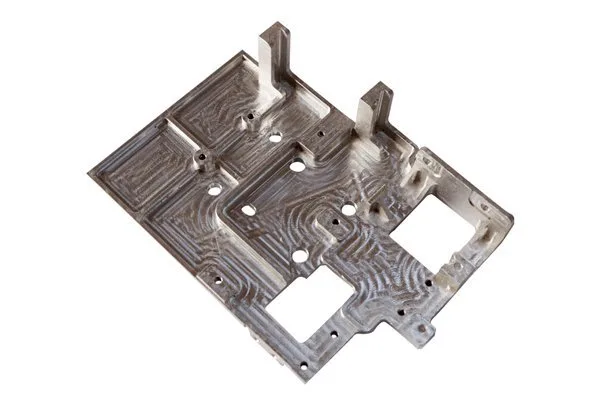*
In the modern manufacturing landscape, precision and efficiency reign supreme. At the forefront of this evolution is CNC (Computer Numerical Control) machining, a process that allows manufacturers to create complex aluminum parts with remarkable accuracy. However, this precision comes with its own set of challenges, especially when it comes to optimizing the CNC processing of aluminum. At YL Machining, we believe that mastering the optimization of CNC processing not only enhances product quality but also contributes to cost reduction and turnaround time. In this article, we will explore comprehensive strategies and best practices for optimizing the CNC machining process for aluminum parts. Buckle up, as we delve deep into the world of CNC machining!
Before we explore optimization techniques, it is crucial to appreciate the relationship between CNC machining and aluminum.
1.1 What is CNC Machining?
CNC machining is a manufacturing process that uses computer-controlled machinery to remove material from a workpiece to create the desired shape. The process is widely used in various industries, including aerospace, automotive, and medical, due to its ability to produce high-quality, repeatable parts.
1.2 Why Aluminum?
Aluminum is a popular material in CNC machining due to its properties, such as:
1.3 Challenges with CNC Processing of Aluminum
While aluminum presents numerous advantages, it also poses challenges in CNC processing, such as:
Optimization begins with a strong foundation, which is built on quality equipment, materials, and an understanding of the machining environment.
2.1 Selecting the Right CNC Machine
Choosing the appropriate CNC machine is the first step in achieving optimal results. Consider the following factors:
2.2 Choosing the Right Aluminum Alloy
Different aluminum alloys exhibit varying mechanical properties, which can significantly impact machining performance. Some popular alloys include:
2.3 Utilizing Quality Tools and Tooling Systems
The choice of cutting tools significantly impacts machining efficiency and part quality. For aluminum machining, consider the following tool factors:
Once the foundation is laid, it is time to fine-tune the machining parameters to maximize efficiency and part quality.
3.1 Feed Rate and Cutting Speed
The feed rate (the speed at which the tool moves through the material) and cutting speed (the speed of the tool’s rotation) play crucial roles in determining the efficiency of CNC machining.
3.2 Coolant and Lubrication
Due to aluminum’s high thermal conductivity, proper cooling and lubrication can significantly enhance performance and tool life.
3.3 Tool Path Optimization
Efficient tool paths are paramount for reducing machining time and enhancing part integrity. Techniques such as:
No optimization strategy is complete without a strong quality control (QC) framework and a commitment to continuous improvement.
4.1 Implementing Quality Control Measures
Regular quality checks ensure that parts meet specified tolerances and surface finishes. Methods include:
4.2 Feedback Loop for Continuous Improvement
Feedback from operators and machinists is invaluable for identifying areas for improvement. Consider:
4.3 Lean Manufacturing Principles
Incorporate lean manufacturing principles to eliminate waste and enhance efficiency. This can include:
To illustrate the effectiveness of these optimization techniques, let’s explore a couple of case studies where YL Machining successfully transformed its CNC processing of aluminum parts.
5.1 Case Study 1: Aerospace Component Production
The Challenge: YL Machining was tasked with producing lightweight aluminum components for an aerospace client. High tolerance levels and quick delivery times were critical.
The Solution: By implementing high spindle speeds and optimized cooling techniques, along with employing adaptive manufacturing strategies, YL Machining significantly reduced cycle times while maintaining precision.
The Result: The client reported a 30% improvement in production efficiency, coupled with a substantial reduction in tool wear and scrap rates.
5.2 Case Study 2: Automotive Part Fabrication
The Challenge: A tier-1 automotive manufacturer sought to enhance the production of aluminum brackets for electric vehicles, where quality and surface finish were paramount.
The Solution: Utilizing advanced trochoidal milling techniques along with superior carbide cutting tools and specialized coatings, YL Machining improved surface finish while decreasing machining times.
The Result:* The automotive manufacturer experienced a 40% reduction in machining time and praised the enhanced surface quality, leading to increased customer satisfaction.
Optimizing CNC processing for aluminum parts is both an art and a science. By understanding the intricacies of aluminum, selecting the right equipment, implementing effective machining parameters, and maintaining stringent quality control measures, manufacturers can achieve remarkable results. At YL Machining, our commitment to innovation and excellence drives us to continually refine our processes, ensuring that we deliver high-quality aluminum components that meet and exceed client expectations. As you embark on your optimization journey, remember that continuous improvement is the key to staying competitive in the ever-evolving manufacturing landscape.
Let’s embrace the complexity of CNC machining and see how far our creativity and craftsmanship can take us in the realm of aluminum processing. Join us in shaping the future of precision manufacturing!




